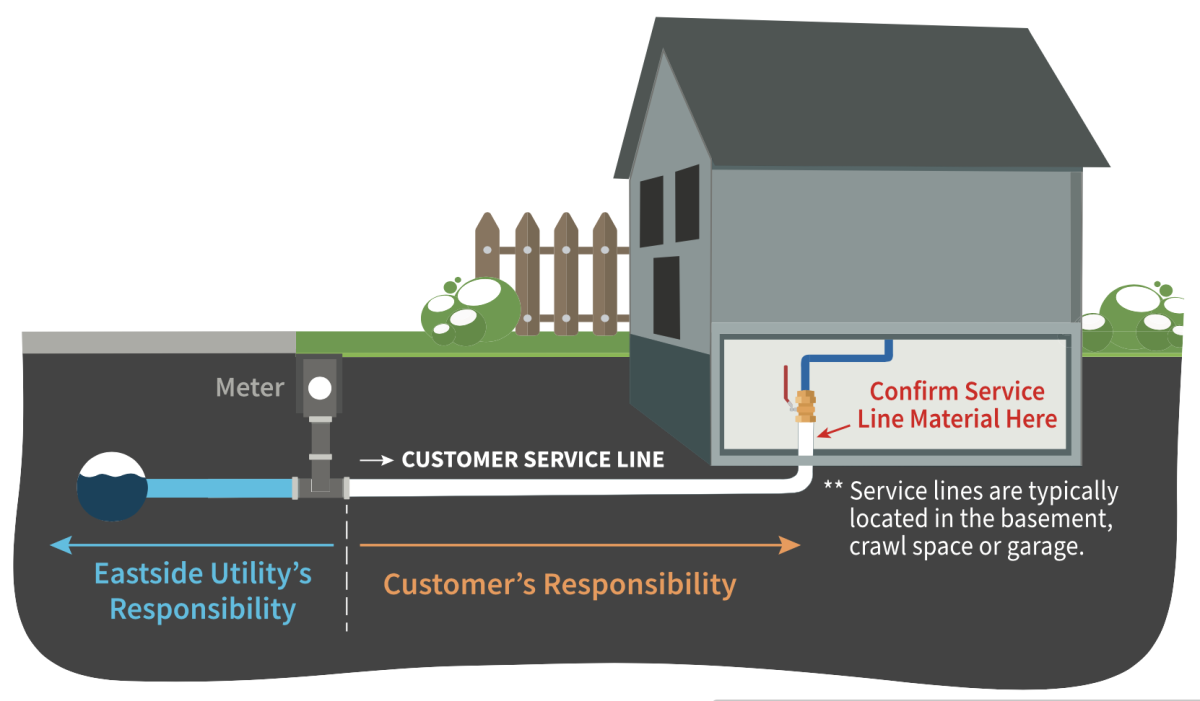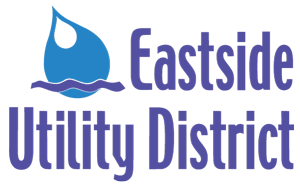Lead & Copper Rule Revision ( LCRR )
Facts & Questions
- What is lead and how does it get into drinking water?
- Are there health risks associated with lead in drinking water?
- Is EUD treating their water to avoid lead getting into water pipes?
- What is EUD doing to reduce the potential for lead exposure in drinking water?
- What is a service line?
- Are there ways I can check for lead where I live or work?
- I've completed a scratch test and I'm concerned my service line may have lead plumbing. What are my next steps?
- Will EUD pay to replace my lead service line?
- Are there ways I can reduce my exposure to lead in my drinking water?
- Where can I find more information about lead in drinking water?
Lead Service Line Map
Enter your address below to check the status of your water service line material.
What is lead and how does it get into drinking water?
Lead is a naturally occurring metal that can be harmful if inhaled or swallowed. According to the Tennessee Department of Environment and Conservation, lead can be found in some metal water taps, interior water pipes, or pipes connecting a house to the main water pipe in the street. Lead found in tap water usually comes from the corrosion of older fixtures or from the solder that connects pipes. When water sits in leaded pipes for several hours, lead can leach into the water supply. For more information on lead in drinking water, go to TDEC's website: https://www.tn.gov/health/cedep/environmental/healthy-homes/hh/drinking-water.html
Are there health risks associated with lead in drinking water?
Yes. Exposure to lead in drinking water can cause serious health effects in all age groups. Infants and children can have decreases in IQ and attention span. Lead exposure can lead to new learning and behavior problems or exacerbate existing learning and behavior problems. The children of women who are exposed to lead before or during pregnancy can have increased risk of these adverse health effects. Adults can have increased risks of heart disease, high blood pressure, kidney, or nervous system problems.
They recommend that taking actions that can help reduce or eliminate the potential health issues related to drinking water that contains lead, especially for children. To learn more, go to the EPA's website: https://www.epa.gov/ground-water-and-drinking-water/basic-information-about-lead-drinking-water
Is EUD treating their water to avoid lead getting into water pipes?
Yes. As required by the EPA and LCR regulations, Eastside Utility District treats their drinking water to control corrosiveness. The most recent testing result data notes they remain in compliance with all current EPA and TDEC standards. For more information, please refer to EUD's 2023 Water Quality Report
What is EUD doing to reduce the potential for lead exposure in drinking water?
EUD consistently follows and stays current with all EPA and TDEC health and safety guidelines and mandates including:
- Consistent Testing & Corrosion Control: We routinely collect samples across our entire distribution area to monitor and assess the effectiveness of our lead corrosion control treatment.
- Infrastructure Upgrades: We are continuing our water main replacement program, replacing the oldest pipes in the system, which includes utility owned portion of lead service lines if present.
- Service Line Identification: We are actively working to identify all drinking water service line materials throughout the water supply and are proactively preparing for compliance with the EPA's Lead and Copper Rule.
- Education and Awareness: We are committed to providing increased education about lead in drinking water and encouraging customers to take action on lead service lines in the community to reduce the potential risk of lead exposure.
What is a service line?
Service lines carry the water from the utility to the customer. A customer's service line runs from the Utility's water main in the street through your property to your residence or commercial building.
Service lines have two sections:
- The service side: The section from the Utility's water main to the meter. The Utility owns and maintains the service side and the meter.
- The supply side: The section continuing from the meter to your house. Property owners own and maintain the supply side of the service line

Are there ways I can check for lead where I live or work?
YES. Below are a few ways you can check:
- Lead test kits can be purchased at your local hardware or home improvement store. These kits are used to test what the pipe is made from—not the water inside. Look for an EPA- recognized kit.
- A licensed plumber can inspect your pipes and other plumbing for lead. Replacing an older brass faucet or valve may be a simple way to reduce the lead in water.
I've completed a scratch test and I'm concerned my service line may have lead plumbing. What are my next steps?
We are actively working to identify all drinking water service line materials throughout the water supply. To determine the service line material at your property, we need your help! To help you check for lead, we've created a webpage to guide you through the process.
Will EUD pay to replace my lead service line?
No. EUD is responsible for any lead service line from the water main to the meter located near the property line. Lead services lines from the meter to a home or building located on a customer's property are the responsibility of the property owner as shown above.
Are there ways I can reduce my exposure to lead in my drinking water?
There are several steps you can take to reduce your exposure to lead in drinking water. However, if you have a lead service line, the best step you can take is to have it replaced. Below are recommended actions that you may take, separately or in combination, if you are concerned about lead in your drinking water. The list also includes where you may find more information and is not intended to be a complete list or to imply that all actions equally reduce lead from drinking water. Additional information is available on EPA’s website.
- Run the cold water to flush out lead. If water has not been used for several hours, run the cold-water faucet for 5 minutes to flush lead from interior plumbing or until it becomes cold or reaches a steady temperature before using for drinking or cooking.
- Use cold water for drinking, cooking, and preparing baby formula. Use only cold water for drinking, cooking and making baby formula. Hot water may cause increases in lead concentrations at the tap and therefore should not be used to prepare food or baby formula. Boiling water does not reduce or remove lead from drinking water.
- Test your water for lead. The only way to determine the level of lead in drinking water at your home/building is to have the water tested. A list of certified laboratories is available from the Tennessee Department of Health.
- Clean your faucet aerators. Regularly clean your faucet's screen (also referred to as an aerator). Sediment, debris, and metals, including lead particles, can collect in the aerator. If lead particles are caught in the aerator, lead can get into your water.
- Use a filter to remove lead. Using a filter can reduce lead in drinking water. If you use a filter, it should be certified to remove lead. Read any directions provided with the filter to learn how to properly install, maintain, and use your cartridge and when to replace it. Using the cartridge after it has expired can make it less effective at removing lead. Do not run hot water through the filter. For more information on facts and advice on home water filtration systems, visit EPA’s website and EPA’s Consumer Tool for Identifying Drinking Water Filters Certified to Reduce Lead.
- Install lead-free faucets and fixtures. Follow the EPA's guidelines and look for lead certification marks indicating the new product is lead free, and then replace old faucets and fixtures. Visit www.nepis.epa.gov and search for lead free certification for more information and the latest resources.
- Test your child's blood lead level. Contact your local health department or healthcare provider to find out how you can get your child tested for lead if you are concerned about exposure.
For more information on reducing lead exposure around your home/building and the health effects of lead, visit EPA's website at www.epa.gov/lead, or contact your health care provider or local health department.
Where can I find more information about lead in drinking water?
Links to EPA Informational Materials are below:

